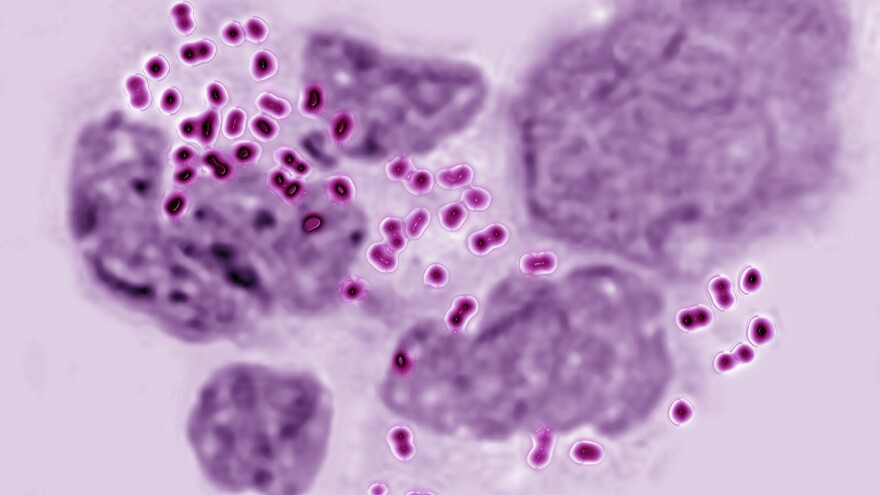The number of people infected with three major sexually transmitted diseases is at an all-time high, according to a CDC report released Wednesday. And the increase in reported cases of chlamydia, gonorrhea and syphilis is hitting teenagers and young adults hardest.
Over half of gonorrhea and chlamydia cases are in people under the age of 25, says Dr. Jonathan Mermin, director of the National Center for HIV/AIDS, Viral Hepatitis, STD, and TB Prevention for the CDC.
These STDs can have serious long term health consequences, including chronic pain and fertility problems. Pregnant women can pass syphilis on to their children, leading to stillbirth or birth defects.
State and local budget cuts to STD care and prevention programs are major drivers in the surge in STDs, Mermin says. "Our ability to prevent STDs is only as strong as the public health infrastructure to support it," he says. "More than half of state and local STD programs have experienced budget cuts. In 2012, 20 health departments reported having to close their STD clinics."
Syphilis infections have been increasing at a particularly troubling rate, according to the report. In 2015, 23,872 cases were reported, a 19 percent increase since 2014. Syphilis cases have been going up over the past decade, while the spike in cases of chlamydia and gonorrhea is more recent. There were 395,216 cases of gonorrhea in 2015, for an increase of 13 percent, and 1.5 million cases of chlamydia, for an increase of 6 percent.
All three infections can be treated with antibiotics, though gonorrhea is becoming increasingly resistant to antibiotics.
"This basically tells us we have to do a better job of reach out to some of these communities that are disproportionately affected by these infections," says Dr. Jose Bazan, a medical director for an STD clinic at Columbus Public Health and an assistant professor of internal medicine at Ohio State University who was not involved with the report.
Men who have sex with men face a greater risk of being infected with syphilis. Over 80 percent of male syphilis cases were reported among gay and bisexual males, and over 90 percent of all syphilis cases were in men. People in racial and sexual minority groups can have more than the usual trouble finding care for preventing and treating STDs.
According to a congressional briefing last April by Dr. Gail Bolan, the director for the CDC Division of STD Prevention, over 40 percent of health departments reduced clinic hours, screening, or tracing people who may have been infected. "If that infrastructure gets eroded, people are more likely to have their STDs for a longer period of time, and that can lead to increased transmission," Mermin says.
The federal government also helps fund state and local STD programs through the CDC, but federal funds have not helped make up for some of the budget cuts on the local level, according to David Harvey, the executive director for the National Coalition of STD Directors. "We believe there's a direct relationship between budget cuts and increases in STDs in the United States. There has been no federal increases for STD programs in this country since 2003," he says.
If the trend is to be reversed, Mermin says there needs to be a real investment in STD prevention so that clinics can monitor these diseases and quickly diagnose and treat people who are infected. "We've seen success in the past where investments have paid off," he says. "We know what we need to do. We just need to do it more effectively than we've been able to do with this eroding infrastructure."
Copyright 2021 NPR. To see more, visit https://www.npr.org.



